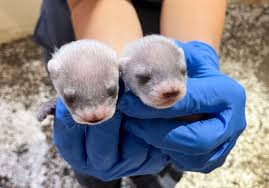Black-Footed Ferret : New Offspring Produced

Antonia, a cloned black-footed ferret at the Smithsonian’s National Zoo and Conservation Biology Institute, has produced two healthy offspring that will help build genetic diversity in their recovering population
- Black-Footed Ferret belongs to the weasel family and is the only ferret that is native to North America.
- These are considered alert, agile, and curious mammals, and are known to exhibit keen senses of smell, sight, and hearing.
- It ranges throughout the interior regions of North America, from southern Canada to northern Mexico.
- It can be found in the short or middle grass prairies and rolling hills of North America.
- They live within the abandoned burrows of prairie dogs and use these complex underground tunnels for shelter and hunting.
- It is nocturnal and is active mostly during the night, with peak hours around dusk.
- Ferrets reduce their activity levels in the winter, sometimes remaining underground for up to a week.
- These are carnivores; they mostly eat prairie dogs, also sometimes mice, ground squirrels, or other small animals.
- They exhibit a phenomenon known as “delayed implantation,” in which the fertilized egg does not start developing until conditions are appropriate for gestation.
- Conservation status IUCN: Endangered
- CITES: Appendix I
- It is believed that the loss of natural habitat and the rise in the incidence of diseases are the biggest reasons behind the decline in their population.




